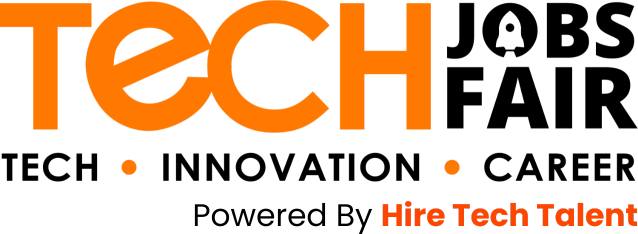- « Previous blog
-
January 31, 2023
-
1278
- Next blog »
A new level of success can be achieved with the right employees. On the other hand, finding the right employees or applicants is not always easy. Many applicants have extensive experience and backgrounds, but not all will fit well inside your organization. This is why you need a tech recruiting plan to break through the noise and locate the proper developers, coders, and workers for your company.
This blog defines the recruiting process and provides Tips to Improve Your Technical Recruitment Process for developing and sustaining a successful hiring process.
How does the hiring process work?
The hiring process, often known as the recruitment process, refers to companies’ procedures to search and hire appropriate individuals for open positions. While hiring processes vary depending on a company’s size, goals, and hiring needs, most use comparable methods to locate the best candidates for open positions. Large organizations frequently have departments dedicated to recruiting, although smaller businesses may manage to hire internally. The hiring process is often divided into seven stages:
- Finding: Finding quality candidates is the first stage in the hiring process. Companies’ choice of platform for advertising job postings can influence who applies for the position.
- Engaging: The second stage of the hiring process involves attracting people to the position, which is often accomplished by writing an intriguing job description or giving a competitive wage package.
- The screening process: After receiving applications, employers analyze resumes and professional profiles to determine which individuals are qualified and whom they want to learn more about.
- Interview: The interviewing part of the process allows hiring managers to learn more about qualified candidates’ abilities, experience, and personality. Companies may conduct many rounds of interviews to discover the best candidate for their position.
- Limiting: Typically, organizations choose their preferred candidates after conducting interviews. They may conduct many rounds of interviews to obtain more educated opinions on the short-listed individuals to select the best one.
- Making a choice: Employers choose a candidate near the conclusion of the hiring process who they believe is the best fit for the role.
- Recruiting: The final stage is to extend an offer letter to the employee they have chosen for the position. If the candidate accepts the offer, the post is filled, and the company’s search is over.
What are the 5 stages of the recruitment process?
| Stage | Description |
|---|---|
| Planning | Defining job roles, calculating necessary education and experience, and determining the cost and timing of the hiring process. |
| Recruiting | Locating and attracting possible candidates through methods like job postings, recommendations, career fairs, social media, and recruitment agencies. |
| Examining | Screening applications, cover letters, and resumes to identify individuals who best fit the position’s requirements. This may include pre-screening tests or interviews. |
| Selection | Evaluating selected candidates, administering assessments, checking references, and making final decisions. It also involves negotiating employment terms and making job offers. |
| Onboarding | Introducing the new employee to the company, providing orientation and training, and integrating them into their new position and team. Crucial step for ensuring the new hire’s success and continued employment with the company. |
How to Improve Your Technical Recruitment Process Right Away
Of course, assessing where you are is the first step in improving anything. If you already have a developer hiring plan in place, go over it again. If you don’t have one, now is the time to get one. Be certain that your IT talent recruitment approach includes essential best practices.
Begin by deciding who should be involved in your business, what questions you’ll ask each candidate, and what types of exercises or evaluations you’ll use to measure their technical ability.
Similarly, you’ll want to prevent any mistakes that could turn off talent, especially early in the tech recruitment process. Are you committing any of these frequent technical recruitment process blunders, and if so, what can you do to avoid them?
Now that you’ve identified some areas for improvement in your existing developer hiring strategy, we can move on to the next four steps in enhancing your approach and bringing you closer to better results.
-
Make use of virtual whiteboarding during technical interviews
When hiring for professions that have traditionally relied on tried and true in-person procedures, remote tech recruiting presents certain obstacles. Employers can use virtual whiteboarding to imitate traditional in-person exams while providing a user-friendly way for candidates to showcase their skills.
This application enables interviewers to connect with candidates via video and voice to do live coding activities in a more natural manner, allowing interviewers to build a genuine personal connection with the candidate.
-
Create a Clear Customer Experience
Creating a simple and transparent applicant experience may appear to be a daunting task. It won’t happen overnight, but making small efforts can help you construct a firm foundation on which to build.
Begin by clearly conveying expectations to each candidate through precise job descriptions, and continue communicating expectations throughout the technical recruitment process. Make certain to meet their expectations, as this fosters trust.
Second, share your diversity, equality, and inclusion (DEI) initiatives in your recruiting content to demonstrate your commitment to DEI. Communicate consistently and frequently with candidates during their conversations to avoid them feeling unimportant.
-
Reduce Bias in Technical Talent Recruitment
Job seekers are more aware than ever of which firms actively attempt to remove bias in the technical hiring process and which do not. Not just some job seekers; according to Glassdoor, two-thirds (67%) of candidates look for diverse firms while looking for their next career.
Shifting to skills-based job descriptions, using virtual recruiting to cast a wider net, and implementing remote and hybrid work arrangements can help you avoid prejudice in your hiring process, as can using AI and code tests for developer roles.
-
Create scalable and remote-friendly hiring processes
Investing in enhancing your developer hiring approach includes future-proofing you’re recruiting to the extent that anyone can. Using scalable and remote-friendly tools and processes can help your team remain adaptable in the face of future problems.
What are the 4 pillars of the technical recruitment process?
- Sourcing: This pillar entails locating possible individuals who have the training and experience necessary for the position. This may entail utilizing a variety of platforms, including job boards, social media, personal recommendations, and recruitment firms.
- Screening: This pillar entails assessing candidates’ technical expertise and knowledge to establish their suitability for the position. Technical evaluations, coding challenges, and technical interviews might be involved.
- Assessment: This pillar entails assessing the candidate’s general suitability for the position and the company. This may entail evaluating their motivation for the position, cultural fit, and communication abilities.
- Interviewing: This pillar entails conducting efficient interviews that evaluate the candidate’s non-technical and technical skills. Structured, behavioral, and technical interviews may be used in this process to assess a candidate’s abilities and experience thoroughly.
The Bottom Line
Hiring the right individuals with the right abilities and potential for your firm is critical in the tech industry to survive and grow in an ever-changing world.
Building a successful business depends partly on hiring employees who are a good fit for your team and providing new perspectives and capabilities that enable you to continue developing innovative solutions for your clients.
Spending time and effort to improve your technical recruitment process and your developer hiring strategy helps you strive toward this goal and establish winning teams.
Dive in and explore how HTT is changing the tech recruitment game & learn about reverse recruiting and how it’s different with traditional hiring process.
Join 20,000+ Subscribers
Get exclusive access to new tips, articles, guides, updates, and more.



